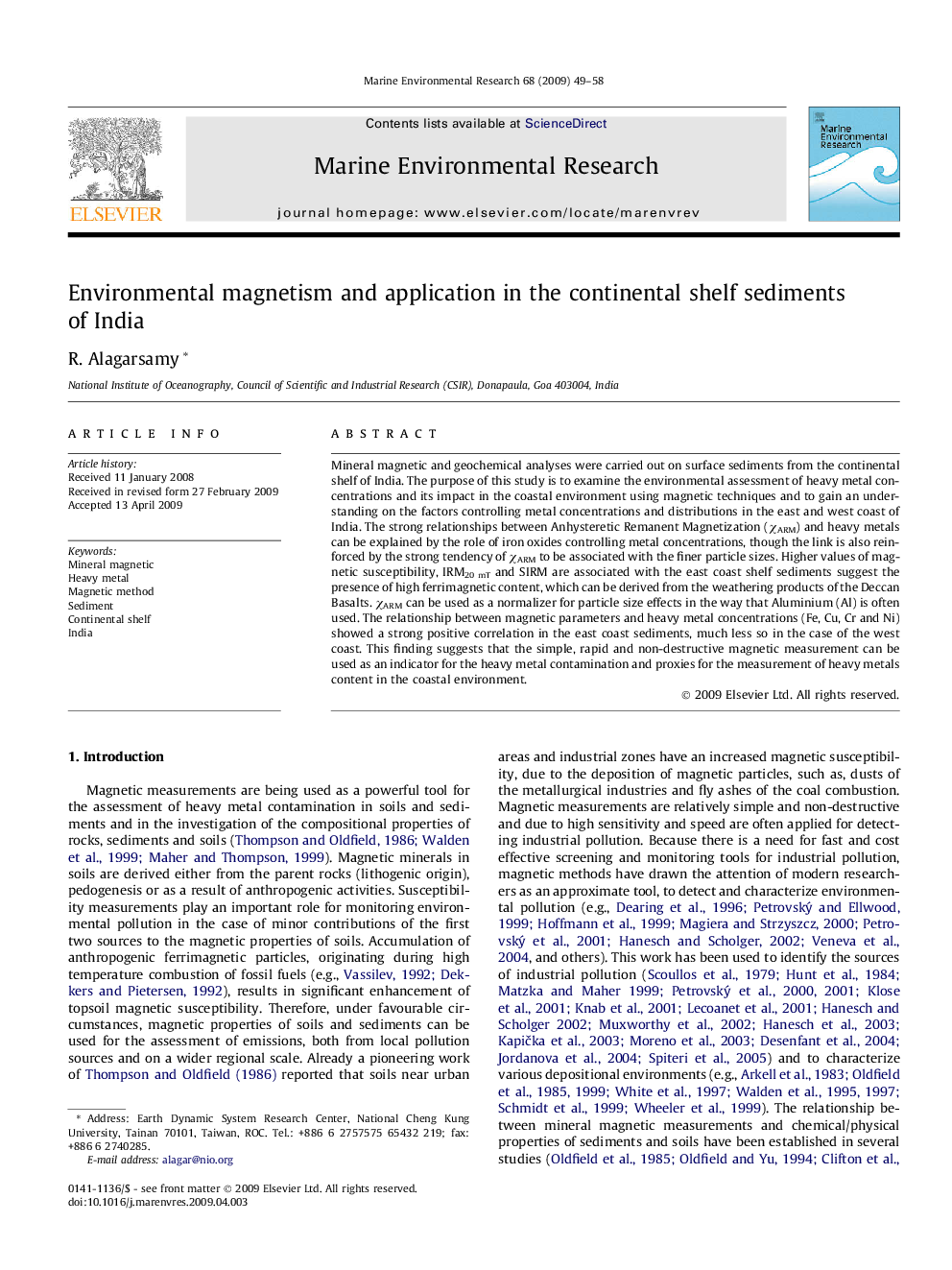| Article ID | Journal | Published Year | Pages | File Type |
|---|---|---|---|---|
| 4551438 | Marine Environmental Research | 2009 | 10 Pages |
Mineral magnetic and geochemical analyses were carried out on surface sediments from the continental shelf of India. The purpose of this study is to examine the environmental assessment of heavy metal concentrations and its impact in the coastal environment using magnetic techniques and to gain an understanding on the factors controlling metal concentrations and distributions in the east and west coast of India. The strong relationships between Anhysteretic Remanent Magnetization (χARM) and heavy metals can be explained by the role of iron oxides controlling metal concentrations, though the link is also reinforced by the strong tendency of χARM to be associated with the finer particle sizes. Higher values of magnetic susceptibility, IRM20 mT and SIRM are associated with the east coast shelf sediments suggest the presence of high ferrimagnetic content, which can be derived from the weathering products of the Deccan Basalts. χARM can be used as a normalizer for particle size effects in the way that Aluminium (Al) is often used. The relationship between magnetic parameters and heavy metal concentrations (Fe, Cu, Cr and Ni) showed a strong positive correlation in the east coast sediments, much less so in the case of the west coast. This finding suggests that the simple, rapid and non-destructive magnetic measurement can be used as an indicator for the heavy metal contamination and proxies for the measurement of heavy metals content in the coastal environment.
